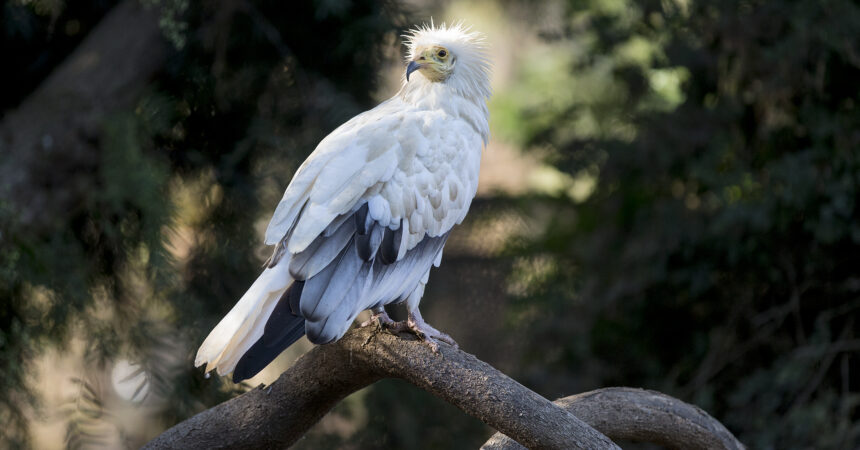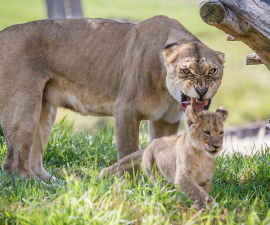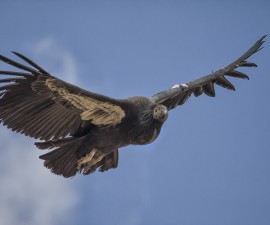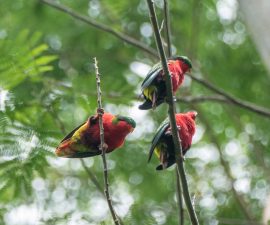On the morning of April 8, 2020 we made an exciting discovery: a new egg in our Egyptian vulture nest! Not only was this exciting because Egyptian vultures are an endangered species, but this was also a first for San Diego Zoo Global and the culmination of over a decade of work by our wildlife care specialists.
This story begins in 2008, when a pair of Egyptian vultures came to us from a rehabilitation facility in Zimbabwe. These two vultures had been illegally taken from the wild and were too habituated to human contact to be re-released. At that time, there were not many Egyptian vultures in the United States, and no reproducing pairs. By bringing this pair to the Safari Park, we could give them the opportunity to thrive and, hopefully, have offspring of their own.
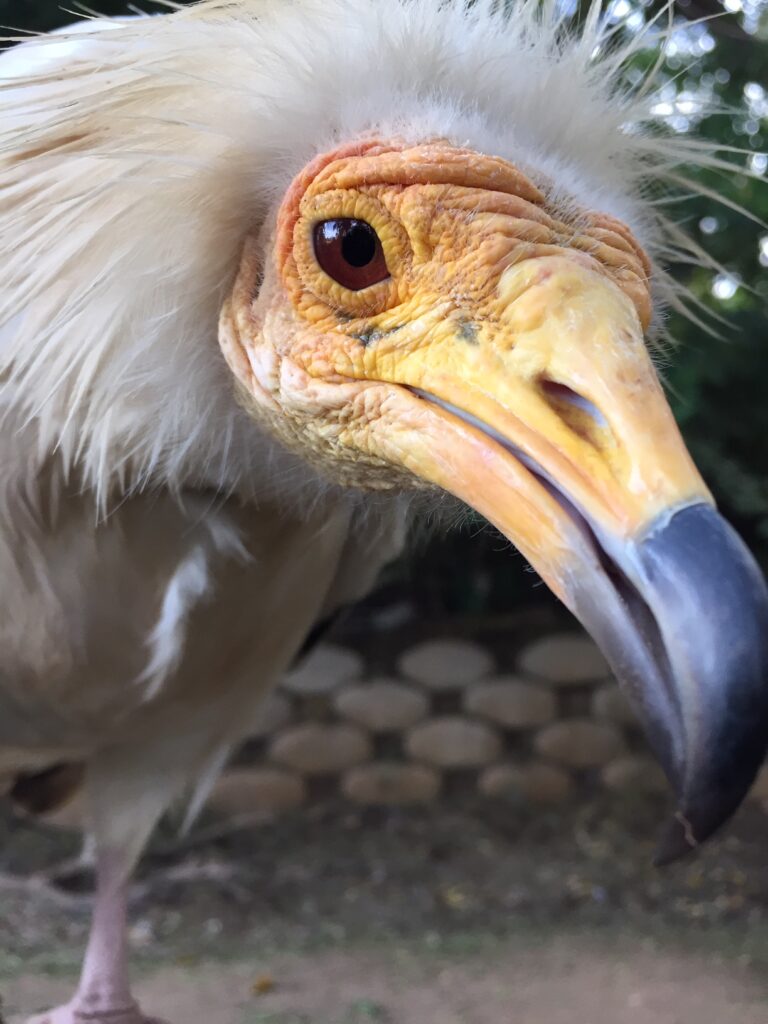
The male Egyptian vulture was very friendly toward the wildlife care specialists who took care of him, which can be a lot of fun for us, but usually doesn’t translate into behavioral reproductive success. The pair lived together at the Safari Park for ten years, but we never saw any encouraging interactions between them.
But, fortunately for our female vulture, a new gentleman was coming to town!
In 2019, we had the chance to bring one of the last available males in the country to San Diego to pair with our female. He was an educational ambassador bird from the World Bird Sanctuary in Missouri. We moved the pair to a private habitat at the Safari Park, in an area called the Bird Breeding Center—where we care for some of our most sensitive and endangered bird species.
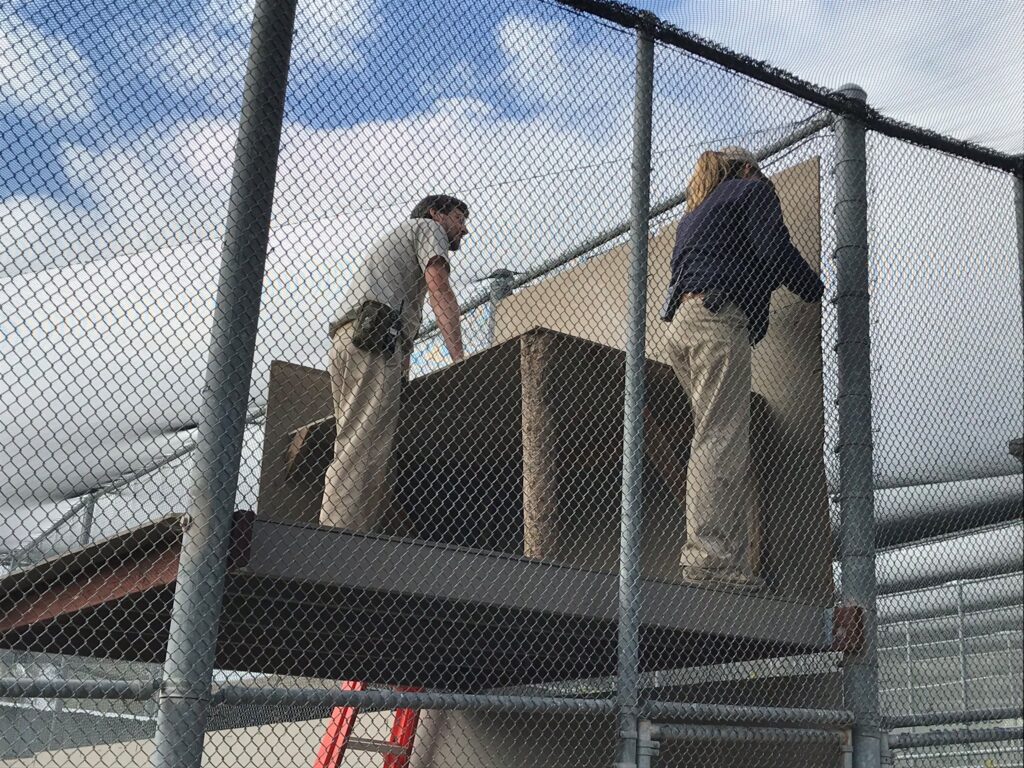
In the wild, Egyptian vultures nest in large trees, on the tops of buildings, or on cliff ledges, so we needed to provide our pair with the proper location and materials they would need to build their nest. We built a structure high off the ground for them to use—their own “cliff ledge” made of plywood.
This type of vulture makes a nest of loose sticks, and then lines it with hair or wool from other animals. Thanks to recent haircuts for two of our dromedary camels, Eli and Mouse, we were able to provide our new vulture pair with camel hair. We were very excited to see them build a nest of small sticks, grass, rabbit fur, and camel hair.
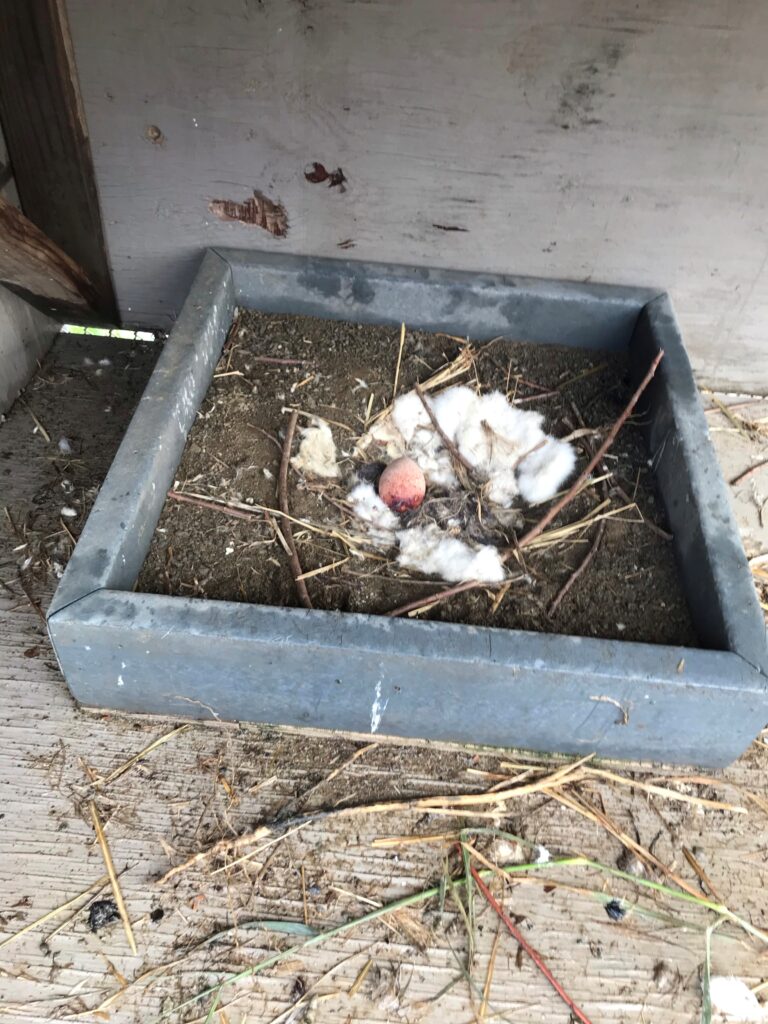
Which brings us to that exciting morning in April! After all it took to get that egg into the nest, we weren’t going to take any chances. We moved the egg to an artificial incubator and replaced it with a fake egg that the vultures could practice sitting on. Unfortunately, when we checked it, the real egg was infertile—but that’s not uncommon for a bird’s first egg. This was a great start for this pair and we look forward (fingers crossed!) to chicks in their future.
In the meantime, if you want to see an Egyptian vulture for yourself, come and visit the San Diego Zoo Safari Park! You can visit our friendly (if un-reproductive) male in his habitat in the African Woods area of the Park, where he seems to enjoy basking in the admiration of our guests.
Join us in honoring vultures of all kinds on International Vulture Awareness Day, Saturday September 5, 2020. Visit our special page of things to watch, discover, and do.
Cameron Switzer is a senior wildlife care specialist at the San Diego Zoo Safari Park. Read his previous blog, Lessons Learned from the Asian Vulture Crisis.

